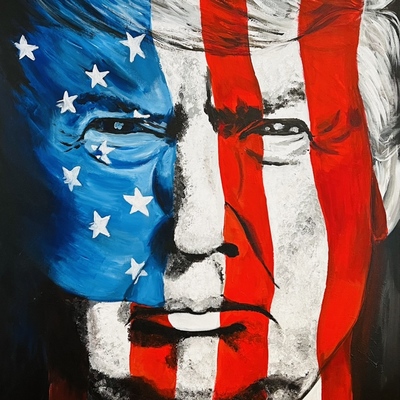Stay informed on the latest Truth Social posts from Donald Trump (@realDonaldTrump) without the doomscrolling. Consider it a public service for your mental health. (Why?)
- The speaker had a 75-minute telephone conversation with President Vladimir Putin of Russia.
- The conversation covered Ukraine's attack on Russia’s docked airplanes and other attacks by both sides.
- The conversation was described as good, but it will not lead to immediate peace.
- President Putin strongly stated he will respond to the recent attack on the airfields.
- The discussion also included Iran, specifically the urgency of Iran's decision regarding nuclear weapons.
- The speaker conveyed to President Putin that Iran cannot possess a nuclear weapon, and they believed there was agreement on this point.
- President Putin offered to participate in discussions with Iran and suggested he could help achieve a rapid conclusion on the nuclear issue.
- The speaker believes Iran has been slow-walking its decision and a definitive answer is required very soon.
The post details high-stakes geopolitical issues: an ongoing conflict with an explicit threat of retaliation and an urgent deadline for Iran's nuclear program. These events directly influence global stability, energy prices, and investor risk appetite, potentially leading to increased market volatility and a flight to safety, impacting broad market indices like the S&P 500.
The post describes an ongoing conflict with a clear statement from one party of intent to respond to an attack, signaling potential for escalation. It also highlights an urgent situation regarding a critical international security concern with Iran's nuclear program, indicating heightened geopolitical tension.
- Commodities: Gold (XAU) is likely to rise due to increased geopolitical tension and safe-haven demand. Oil (WTI) prices are likely to increase due to potential supply disruptions from heightened conflict in Eastern Europe and instability concerns related to Iran in the Middle East. Short-Term Watchlist: XAU/USD price action, oil inventory reports, headlines on Russia/Ukraine conflict developments, Iran nuclear updates. Medium-Term Focus: Global inflation trends, central bank monetary policy, China's industrial demand, and the trajectory of the US Dollar.
- Currencies (Forex): The US Dollar Index (DXY) is likely to strengthen as a safe-haven currency amid global uncertainty. Pairs like EURUSD may weaken due to Europe's proximity to the conflict and energy dependence, while USDJPY might see some safe-haven flows into JPY. Short-Term Watchlist: Federal Reserve officials' statements, Treasury yields, changes in global risk sentiment indicators. Medium-Term Focus: Divergence in central bank policies (e.g., Fed vs ECB/BoJ), global economic growth differentials, and phases of dollar liquidity cycles.
- Global Equities: Major indices such as the S&P 500, Nasdaq, STOXX 600, Nikkei 225, and Hang Seng are likely to face selling pressure due to heightened risk aversion. Defense sector stocks may see a positive impact, while sectors sensitive to energy prices or global trade may experience declines. Short-Term Watchlist: Equity futures performance upon open, VIX (volatility index) spikes or dips, and performance of key sectors like FANG, semiconductors, and defense. Medium-Term Focus: Corporate earnings revisions, macroeconomic data (e.g., ISM, PMI), global capital flow trends, and sustained geopolitical overhangs.
- Fixed Income (Bonds): US 10Y and 2Y Treasury yields are likely to fall as investors seek the safety of government bonds. There may be a flight to quality. Credit spreads could widen if market stress increases. Short-Term Watchlist: Specific levels of UST 10Y yield, the TED spread (an indicator of credit risk), and ETF flows into high-yield corporate bonds (e.g., HYG). Medium-Term Focus: Federal Reserve 'dot plot' projections, concerns over fiscal policy, rhetoric surrounding the debt ceiling, and economic surprise indices.
- Volatility / Derivatives: The VIX (Cboe Volatility Index) is expected to spike significantly as market uncertainty and fear escalate. Options positioning might show an increase in demand for protective put options. Short-Term Watchlist: VIX levels relative to the VIX futures term structure, and the volume/direction of 0DTE (zero days to expiration) options trading. Medium-Term Focus: Potential shifts in volatility regimes, uncertainty stemming from macroeconomic policies, and systemic tail risks from major geopolitical events like elections or ongoing conflicts.
- Crypto / Digital Assets: Bitcoin (BTC) may initially behave as a risk-off asset, showing correlation with technology stocks and potentially declining due to broader market fear, though some might consider its safe-haven potential in extreme scenarios. Overall, a decline is more likely in a risk-off environment. Short-Term Watchlist: BTC/USD price action, Coinbase order book activity, cryptocurrency funding rates, and correlation with Ethereum (ETH). Medium-Term Focus: Regulatory news impacting the crypto space, stablecoin liquidity flows, progress of Ethereum upgrades, and the overall macroeconomic liquidity backdrop.
- Cross-Asset Correlations and Systemic Risk: Monitor for potential breakdowns in normal correlations (e.g., equities and bonds selling off simultaneously), or signs of margin calls and liquidity stress. Short-Term Watchlist: MOVE index (bond market volatility), junk bond ETFs (credit risk), and the co-movement of gold and the US Dollar. Medium-Term Focus: Risks within shadow banking, potential for central bank interventions, and signs of stress within market plumbing mechanisms.
- Retail Sentiment / Market Psychology: The post could trigger increased retail interest in traditional safe-haven assets (e.g., gold) or specific defense sector stocks. It may lead to a more cautious investor sentiment or increased short-term speculative trading. Short-Term Watchlist: Trading volume in 'meme stocks' like GME/AMC, trending topics on social media platforms (Twitter/X, Reddit, TikTok) related to the geopolitical events. Medium-Term Focus: The evolving influence of social media on market structure, potential for coordinated retail trading pushes, and policy/regulatory responses to retail trading behavior.

